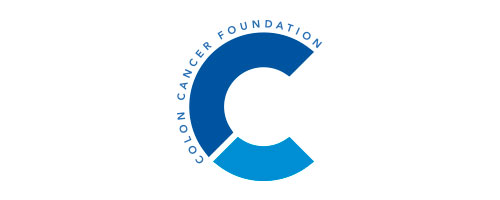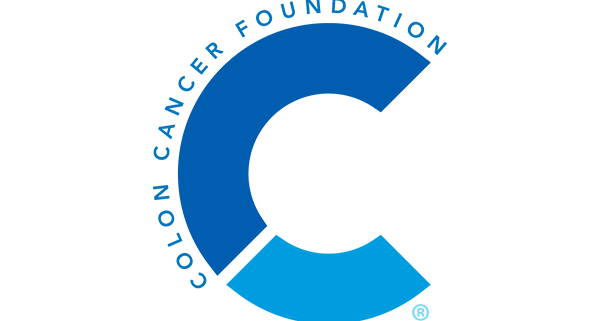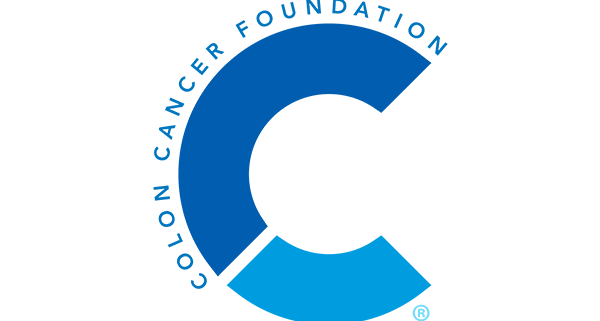Advancements in screening, diagnosis and treatment of colorectal cancer have come a long way in the past two decades, but the need to continue to spread awareness of the disease among young people and continued industry-wide collaboration and investment is necessary to offset the growth in incidence under the age of 50. Those were among the key topics of the 7th annual Early-Age Onset Colorectal Cancer Summit.
The three-day conference, which was held online in a virtual format because of ongoing Covid-19 precautions, concluded on Sunday, May 16. It was organized by the Colon Cancer Foundation, a New York-based 501(c)3 non-profit organization dedicated to reducing colorectal cancer incidence and death. (Presentations from all three days can be viewed online andCME and MOC credit will be available for 30 days.)
At the outset of the third day of the summit, a panel of distinguished experts addressed the case study of a 28-year-old colon cancer patient from a broad-spectrum approach, offering input on patient perspective, nurse navigation, genetics, medical oncology and new therapeutics, surgery, financial burden/toxicity, radiation oncology, psychological needs, pediatrics and palliative care.
The female patient in the opening panel discussion was described as presenting with a multi-year history of chronic constipation for which she took laxatives. Six months prior to visiting an emergency room, she started experiencing a change in symptoms with tenesmus, rectal pain, bowel urgency with intermittent rectal pressure deep in the pelvic region that worsened with prolonged standing.
At the ER, she had an abdominal/pelvic CT scan that showed presence of a moderate amount of stool in the ascending colon, a thick-walled appearance of the rectum about 6cm from the anal verge down to the anal canal/anorectal junction. Those abnormal symptoms prompted a colonoscopy that showed a non-circumferential mass in the distal rectum to the anal verge. A biopsy returned as invasive moderately differentiated adenocarcinoma.
The patient was described as healthy with a BMI of 22 and had no other medical history and was not taking any medications. The only colorectal family history she had was that her father had several polyps removed after the age of 50.
1. Spreading the message about early-age onset colorectal cancer to young people is crucial so symptoms aren’t overlooked or disregarded.
Often young people ignore or miscategorize their symptoms or are too busy to visit their doctor or aren’t concerned because of a lack of family history or because they lack general awareness about colorectal cancer. In some situations, the initial symptoms have disregarded after being attributed to hemorrhoids or other common benign conditions.
“About 70 to 80 percent of our patients that have colon or rectal cancer do not have a family history of the disease, even if someone in the family had a colonscopy and had polyps removed. I always think it’s important to get pathology of the polyps of family members and also to make sure the parents and siblings of the patients have had colonoscopies.”
— Zsofia Stadler, MD, Associate Professor, Clinical Director, Clinical Genetics Service, Memorial Sloan Kettering Cancer Center
“It typically takes about 270 days from the onset of symptoms to diagnosis in young patients because. Most of the time, their symptoms are dismissed as something benign like an upset GI tract that everyone has. As a result, they usually are not given the medical attention that they deserve.”
— Manju George, MVSc, PhD, Scientific Director, Paltown Development Foundation.
2. The top priority with younger colorectal cancer patients is curing the cancer, but there other quality-of-life issues are critical.
An ensuing pelvic MRI confirms a tumor that arises from the right lateral wall at the level of the levator. The distal edge of the tumor is at 2cm from the anal verge and the tumor abuts the internal sphincter. It is at clinic stage III (mrT3aN1b). In this kind of case with a distal tumor, sphincter preservation is very unlikely, and local recurrence is higher for distal tumors than for proximal tumors.
All three modalities of treatment would likely be considered for this patient: chemotherapy because she’s at risk of distant spread, radiation for local control and the distal location and an abdominal perineal resection surgery to maximize disease control. But quality of life priorities that must be considered include maintaining fertility and avoiding a permanent colostomy.
“This is a great case because it’s so illustrative of so many issues, but it’s also a terrible case because when you see cases like this you know the discussions are going to be very difficult and there is no perfect solution and compromises are going to need to be made.”
— Harvey Mamon, MD, PhD, Associate Professor, Radiation Oncology, Harvard Medical School, Director of GI Radiation Oncology, Brigham And Women’s Hospital, Chief, Division of Gastrointestinal Radiation Oncology
3. Fertility preservation options should be discussed as soon as possible after diagnosis.
When a patient has more time to consider egg harvesting or freezing sperm, they can consider it and accomplish it without significantly delaying the onset of their cancer treatments.
“We do want to see these patients as soon as possible, not only because it gives them more options and more time for options. When we talk to patients about fertility preservation, we want them to take a more bird’s-eye view instead of just whether or not they want to freeze their eggs or sperm. They also have to answer questions about whether they can carry a pregnancy after radiation treatment or do genetic testing in the case of a genetic mutation.”
— Terri L. Woodard, MD, Associate Professor Department of Gynecologic Oncology and Reproductive Medicine, The University of Texas MD Anderson Cancer Center
4. Early psychological and social support is necessary for young colorectal cancer patients.
Early referral for a psycho/social assessment is especially important for adolescent and young adult colorectal patients who will have to transition to a permanent colostomy. Reducing the anxiety and depression related to the necessary changes in daily life, family, jobs, social interaction and more
“As clinical social workers and oncology social workers, the No. 1 goal is making sure we meet that patient where they are at and get a sense of who they are, who their support is, if they have any barriers to care based on their socioeconomic status and understanding workplace issues.”
— Krista Nelson, LCSW OSW-C BCD FAOS, President of the Association of Community Cancer Centers
“In my experience working with younger patients, it is such an enormous adjustment and really impacts their quality of life and body image and conversation with family and friends and dating and so many different layers of life. Providing support and psychotherapy around anticipating the adjustment and then making the adjustment to life with a colostomy is hugely important.”
— Hadley Maya, MSW, LCSW, Center for Young Onset Colorectal Cancer Clinical Social Worker, Memorial Sloan Kettering Cancer Center
For additional topics addressed in Session IV, view the full presentation online.
Other highlights of Day 3 included breakout sessions about “Understanding and Addressing Disparities in Early-Age Onset Colorectal Cancer” and “Integrating Music Therapy in Cancer” followed by the conference-concluding Session V, a panel discussion titled “How Did This Happen? Investigating the Causes of Early Onset Colorectal Cancers.”
Moderated by Stephen Gruber, M.D., that session addressed the future of early-age onset colorectal cancer that included discussions about mining electronic health record data and integration with large-scale genomic analyses, the international colorectal pooling project, how microbiome interactions contribute to the rise of early-age onset colorectal cancer and how diet, smoking and obesity, as well as maternal obesity and gestation growth.
Gruber stressed the need for continued collaboration and specific investment to help further the fight against the increasing trend of colorectal cancer in younger people.
“This is not a rare disease anymore but at each center there’s a relatively small number of cases,” Cynthia Sears, MD, Professor, Johns Hopkins University School of Medicine. “. If I can dream, we would create a network, a center of communication and a way to contribute, maybe similar to the TCGA Data Portal – a big data set and some parallel sample collection that would allow, hopefully, the exposure questions to really be pursued. I do think it’s the epidemiology, exposures and sufficient population that we need and it’s hard to get it at one institution.”
In closing remarks, Cindy Borassi, president of the Colon Cancer Foundation, thanked the nearly 300 conference attendees and 50 medical professionals who participated in the seventh annual Early-Age Onset Colorectal Cancer Summit. Sponsors for the summit included Quest Diagnostics, Walgreens, Exact Sciences, Colon Cancer Coalition, Colon Cancer Prevention Project, Taiho Oncology, Daiichi-Sankyo, BRACCO Group, DuClaw Brewing Co. and Squatty Potty
“We invite you to join the discussion, collaborate with thousands of health professionals who are interested in solving the early-age onset colorectal cancer issue,” Borassi said. “I would encourage everyone to tell others to watch the videos on the platform, especially primary care physicians as we all know they are a bit part of the key to solving this issue.”
Day 2 Highlights
Day 2 included the Keynote Address of Stephen Gruber, MD, and Session II, a panel discussion called “The Dimensions of the EAO-CRC Problem: Do We Have Accurate, Regular, Up to Date Measurement of Key Metrics Describing the Early Age Onset Colorectal Cancer Public Health Crisis.” That session included an update about the rising early-onset CRC trends and racial disparities, the impact of COVID-19 on CRC screening and an under-19 incidence and mortality report. Session III was a panel discussion that explored “Risk Assessment/Family History Ascertainment” and included discussions about CRC screening guidelines, increased access to genetic testing and patient access to appropriate care.
Day 1 Highlights
On Day 1, Dr. Whitney Jones, MD, founder of the Colon Cancer Prevention Project, moderated an Session I, a panel discussion about “Improving Earliest Possible Diagnosis and Treatment through Timely Recognition of the Symptoms and Signs of Sporadic Young Adult CRC” with additional topics related to the echo chamber of cyclical discussions, incidence rates and mortality rates by 2040, primary care in improving early diagnosis and a colorectal cancer patient testimonial case study.
To watch any of the presentations, register for the Early Age Onset Colorectal Cancer Summit and access the recorded programs.



